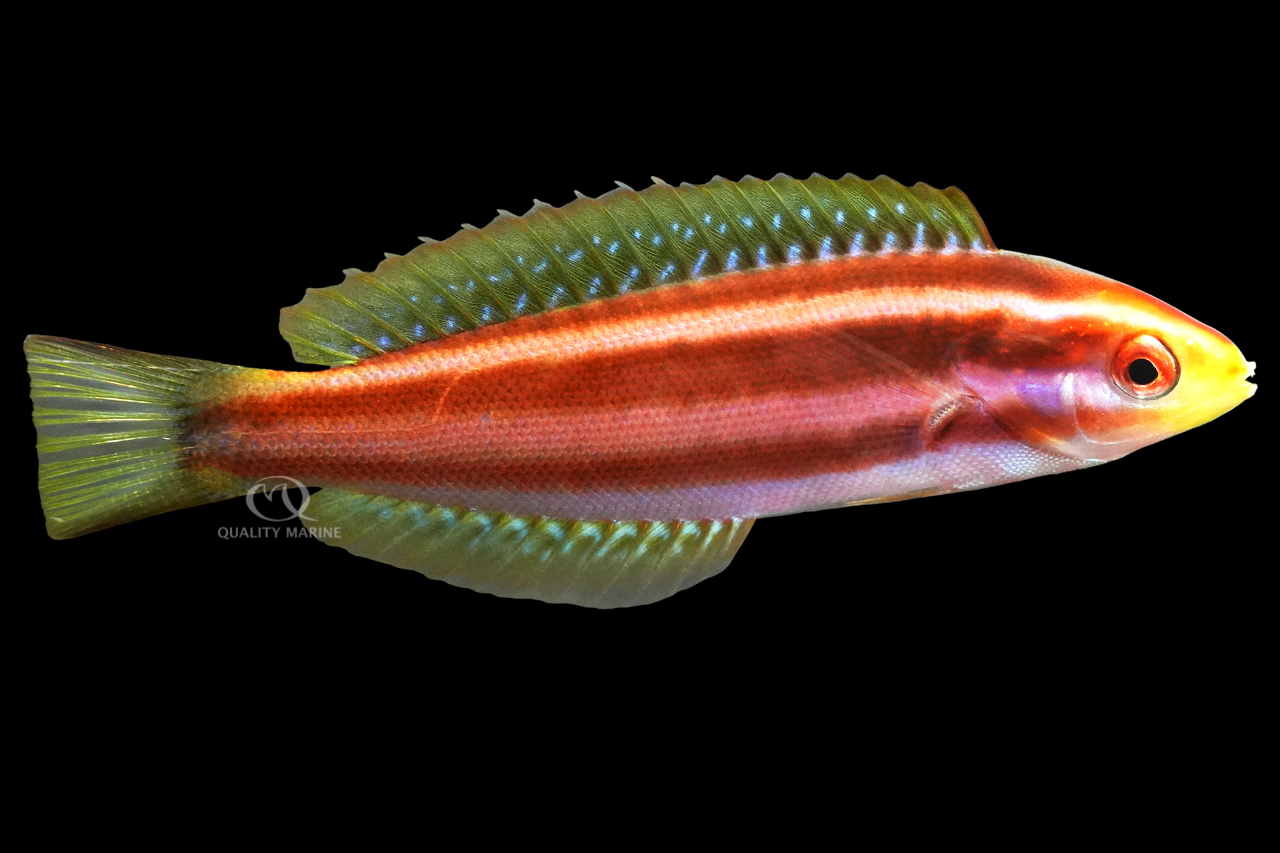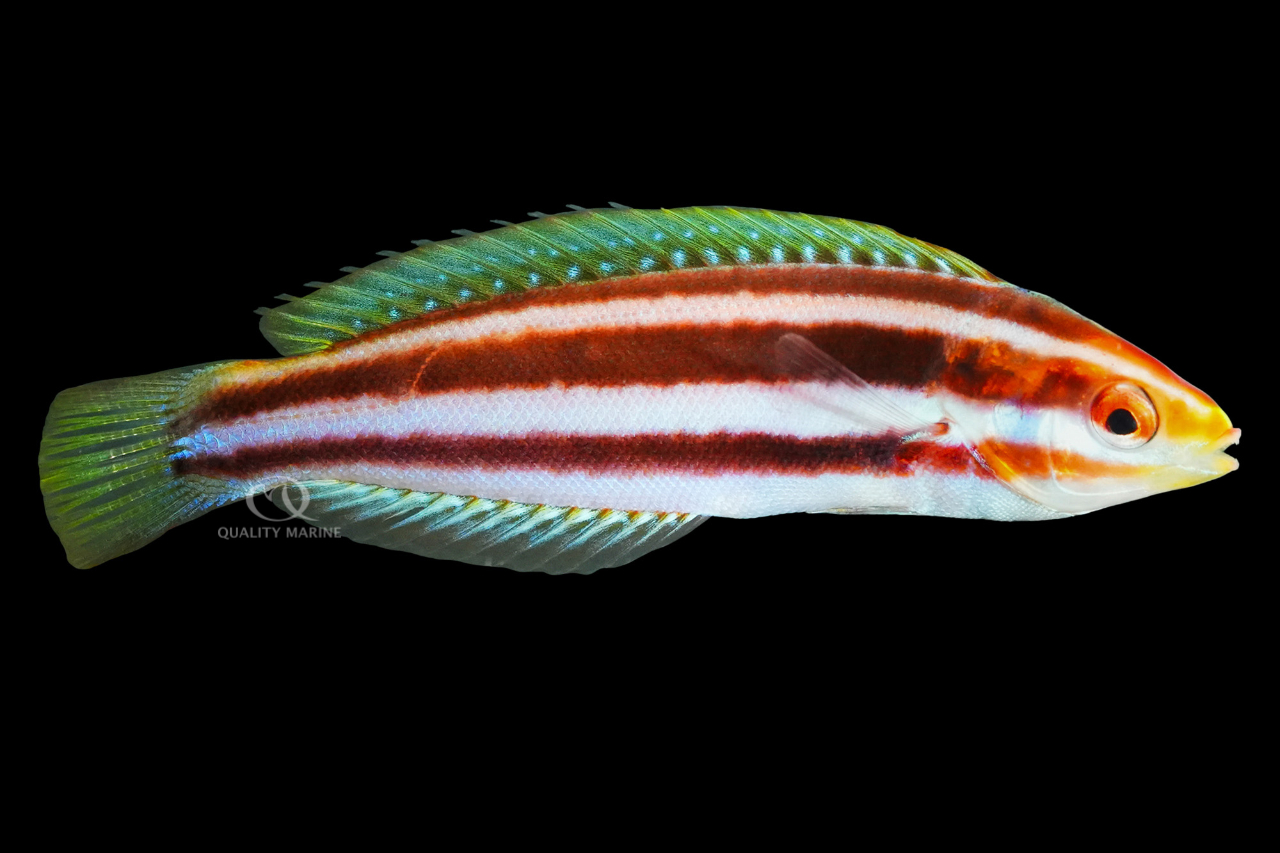Highly Underrated Fish - Rust-Banded Wrasse

The wrasses we all know as Coris are a large and diverse group. A few of them are actually Pseudocoris and get lumped in because of similar body shapes and care requirements. As far as the ones we commonly see in the aquarium hobby, Pseudocoris aurantiofasciata is pretty uncommonly seen, and this is unfortunate. They are gorgeous, hardy, active and intelligent fish that are a joy to watch in a saltwater display. They go by the common moniker “Rust-Banded Wrasse,” and less frequently “Sand Wrasse.”

In the wild, these fish are usually found in small harems (a group where there is one dominant male and multiple females / juvenile fish). Generally, they are collected in relatively shallow water, under 120 feet deep, near reef edges and steep drop offs in the Indo-Pacific Ocean region. The largest male on record is a seven and a half inches long, but a much more common size is five to six inches for males, and four to five for females. Like many wrasses, they undergo a dramatic color change as they mature, with the juveniles bearing their distinctive orange and white stripes with neon yellow fins and nose. As they mature, they'll turn the angry purple blue of the ocean on a stormy day, with males developing several vertical orange/brown stripes along their flank, while the females will have gentler, ombre color fade to teal and orange yellow along their belly. All the color forms of this fish are beautiful, and watching the slow transformation over time is very rewarding.
Feeding these wrasses is usually very easy. They are plankton eaters in the wild and live in spaces where there is an abundance of current. This means their natural feeding behavior is to quickly grab whatever food comes by, and this translates to feeding very effectively in the home aquarium. In house, we feed them a mix of meaty food from Gamma foods. For frozen foods, Gamma is always our choice. They offer a wide range of frozen products which allows us great variation. Their foods are all gamma irradiated, eliminating any chance that food borne pathogens can make their way into our system (or your aquarium.) The mix we use will contain a variety of different products like chopped prawn, chopped mussel, mysis, a variety of enriched brine, and copepods among others. We also feed a high quality, nutrient dense pellet from Nutramar (Nutramar Complete) which most of the fish accept after a few feedings. We feed them twice a day here, and this should be your practice too unless you want to spread that food out over even more feedings. Even fully grown, we suggest maintaining a twice a day schedule.

Rust-Banded Wrasses are relatively small fish, and they'll be very happy in a 55-gallon aquarium. The tank should have plenty of rocks and places for them to swim through, and especially as juveniles, a sand bed for them to hide in. Adults are more likely to just hide in the rocks, but the little ones will overnight under the sand. Make sure the sand is soft and small grained. It doesn't need to be sugar or oolitic sand, but it shouldn't be crushed coral either (if you're buying a large adult fish, this is less important.) Usually, Pseudocoris of all types will either dash for the sand or for a hidey hole in the rocks when startled, which means they aren't super likely to jump out of the tank. That being said, it can happen and so you should consider covering your display.
You don't need to keep them in a group, but if you are planning this, add them all as juveniles, and all at one time. They aren't overly aggressive fish and can be kept in a tank with a wide variety of fish, including other wrasses. Other good tankmates could be anything from Cardinals to Tangs, even Triggers; only the timidest and most aggressive fish should be avoided. Rust-Bandeds are low risk with invertebrates like soft and hard corals but are likely to pick on clams and feather dusters.
Pseudocoris are hardy fish once acclimated and aren't super picky about water quality or exact water parameters. This being said, marine fish tanks should strive to be under 5ppm nitrate (and obviously zero nitrite or ammonia). Water temperatures can be anywhere from 72 -78 Fahrenheit, and the pH should be stable between 7.8 and 8.4. Specific Gravity should measure out between 1.021 and 1.26; it should be stable at whatever number you run your system at.
We all love Pseudocoris here and the Rust-Banded is a rarely seen and wildly underrated member of this group. They offer great durability, excellent coloration, high activity levels and amazing coloration throughout their lives. All of this in a fish that stays aquarium sized for its whole life. They are peaceful enough (and tough enough) to live in a wide variety of marine aquarium displays. How much better can they get?!? Head over to your LFS and ask them about getting you a sustainably harvested Pseudocoris aurantiofasciata from Quality Marine today!